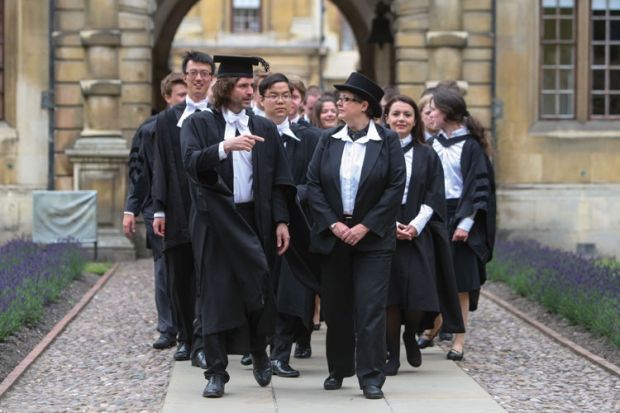According to information published by the Department for Education, just 0.1 per cent of year 11 pupils who claimed free school meals who then took A levels or level 3 qualifications progressed to the universities of Oxford or Cambridge in 2010-11.
Some 4 per cent of year 11 pupils claiming free school meals who continued with post-16 education went to one of the 24 universities in the Russell Group, the DfE also says.
However, 46 per cent of year 11 students on free school meals progressed to university in 2010-11, according to the Destination Measures 2010-11 data published on 21 March.
It is the first time such indicators have been published, the DfE says.
The statistics are likely to renew attention on the Russell Group’s failure to admit more students from poor families.
According to a recent report by the Office for Fair Access, the admission rate for poorer students to the most selective universities have not changed since the 1990s, despite universities spending hundreds of millions of pounds on access measures.
The DfE’s publication of Oxbridge-specific data is also likely to intensify speculation about the priorities and focus of education secretary Michael Gove if he was to take control of higher education after next May’s General Election.
Mr Gove told the Financial Times last week that he wanted to take control of universities and remove them from the business department, which is currently led by Vince Cable.
The education department has already established criteria that allows schools to be judged on the number of pupils they admit to Oxbridge or the Russell Group, while funding to enable sixth-formers to visit Russell Group universities has also been released.
However, Mr Gove’s former permanent secretary, Sir David Bell, who is now vice-chancellor at the University of Reading, has criticised this focus on the Russell Group as “narrow and naïve”.
According to today’s publication, the Oxbridge indicator “will show if the government’s education policies are raising standards and aspirations so that more disadvantaged young people are able to go to Oxford and Cambridge University”.
It follows research that shows “the most advantaged 20 per cent of young people are still seven times more likely to attend the most selective universities than the 40 per cent most disadvantaged”, the publication also adds.
Wendy Piatt, director general of the Russell Group, defended its record on university access, saying about one in three students at its universities received a bursary or scholarship and that the institutions invested millions every year in outreach and related activities.
“Our universities are committed to ensuring our doors are wide open to talented and able students from all backgrounds, provided they have the ability, potential and determination to succeed,” Dr Piatt said.
The main reasons for the low numbers of students from poorer backgrounds were “underachievement in schools and a lack of good advice on subject choices”, she added, saying just 232 students who had been on free school meals achieved 3As at A level or the equivalent in 2009, which equated to only 4.1 per cent of the total number of FSM students taking the exams.




